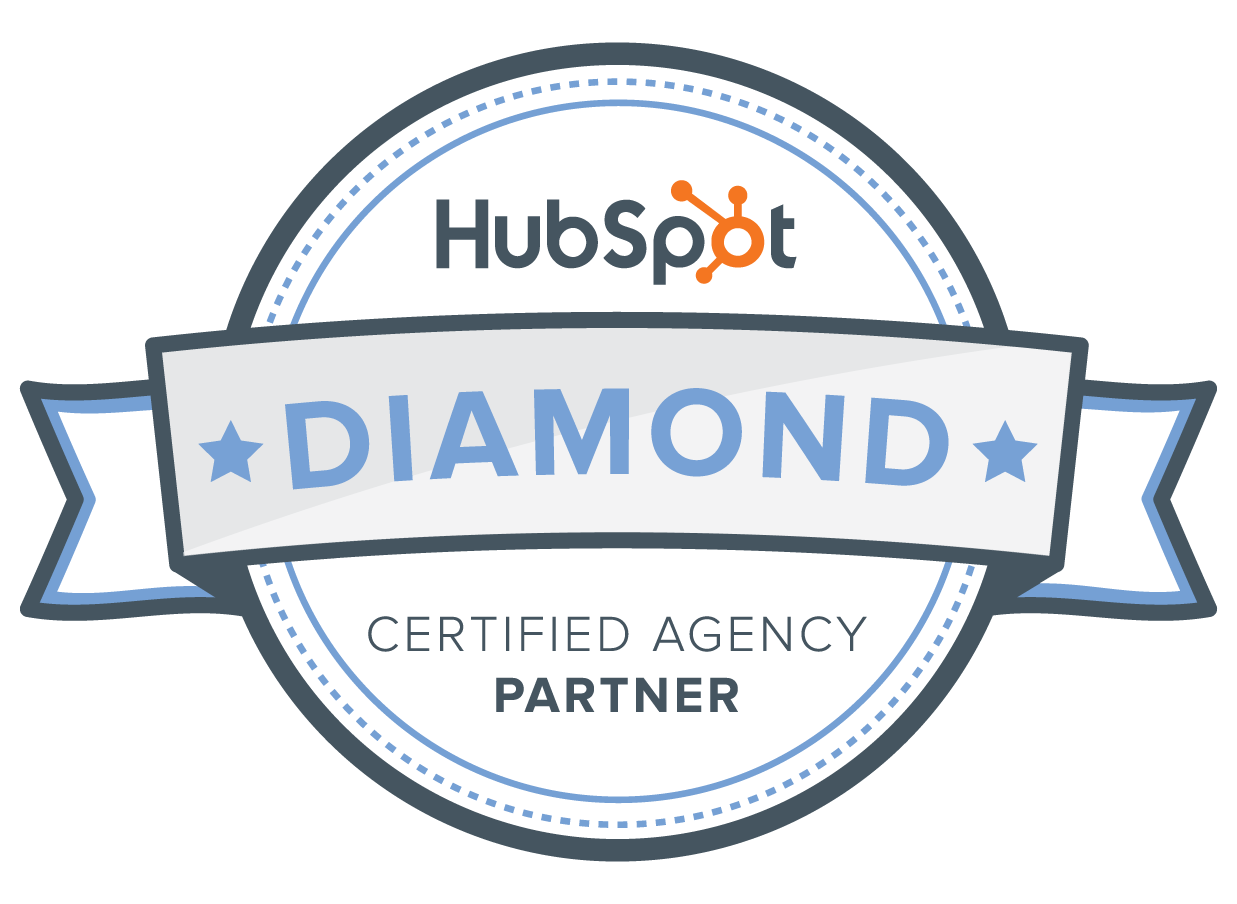Failure to adapt. Leaders of B2B technology companies shudder to hear such words.
Fail to adapt and you’ll look like a laggard -- even if your solutions or services are, in fact, cutting-edge and state of the art. And when it comes to tech, nobody wants to buy from the laggards.
So let’s talk about your website. Does it show how truly exceptional your company is? Does it create a smooth and streamlined experience that’s on par with the solutions you’re selling? Or… does it tell a different story?
This guide will go into depth on eight tried-and-true strategies to help you power up your tech or SaaS website -- and lay out how, exactly, to implement each of those strategies. We’ll even provide a handy checklist to help you prioritize and track some of these ideas. So let’s get started!
Website Design for Technology Companies: Stick to What Works
In the world of B2B website design, there is plenty of precedent on what works. This should serve as welcome news for leaders of technology companies who are daunted by the notion of a website overhaul.
Keep in mind, your website does not need to be infused with tons of novel features or design wow factors. Yes, it should offer visitors something unique about your brand -- but not if it means you’re overdesigning or reinventing the wheel.
Instead, the real wow factor will come from a user experience that gives your visitors exactly what they’re looking for. An experience that builds trust, answers their questions, addresses their pain points, and empowers visitors to make decisions based on where they are in the Buyer’s Journey.
By sticking to some tried-and-true principles, like the ones we’ve rounded up here, you really CAN take your website to the next level. So ready to get started?
1. Let User Experience Guide Website Design
They say you shouldn’t judge a book by its cover, but that’s exactly what your website visitors are doing when browsing your products and web pages.
According to a study conducted by Stanford, almost 75% of users valued website and information design as the biggest part of establishing trust during the user experience.
So how do you get your target audience to trust you and look classy doing it? For a great user experience, you’ll need to focus on the following:
- Have a sleek design (and update often)
BE the products that you’re selling. Does your design reflect your brand? Is it taking into account current design trends -- or did you “set it and forget it” a decade ago?
One study shows that 94% of first impressions for a website are design-related. If your website looks like it’s reminiscent of another decade, that’s the way your technology product is going to be perceived, too.
- Create a mobile-friendly website design
More and more users these days are searching via mobile devices versus desktops. According to Digital Intelligence Briefing, 74% of visitors are likely to come back to your site if it has good mobile UX. If your website hasn’t incorporated a responsive design that adjusts the display for each type of device, you could be missing out on the lion’s share of users.
- Check website loading time
Heard of the 5-second rule? That only applies to food dropped on the floor. When it comes to UX, the amount of time your users will wait for your site to load is about half of that: 2-3 seconds. Research shows that 40% of consumers will wait no more than three seconds before bailing. Your website’s lag time shouldn’t be the reason prospects aren’t sticking around.
- Create interactive web content
Offering interactive website content — assessments, customized tools, videos, clickable photos, roll-over effects, chatbots, you name it!— helps to create engaging experiences for users. These experiences create what we call “stickiness” for website visitors. It’s a win-win scenario: when visitors like what they see, they stick around. This lowers your website’s bounce rate which boosts your site authority among search engines.
PMG PRO Tip: To design for the best user experience, you need to know user behavior. Where are users clicking? How are they interacting with your site navigation? How far down the page are they scrolling? Tools like HotJar use eye-tracking heatmaps to give you detailed insight that can guide your UX design decisions. For example, some studies show that readers scan pages in an “F” shape -- making the top left-hand corner of your website prime real estate!
2. Integrate Self-Service Sales: Help Customers Help Themselves
A good B2B website needs to harness the power of two things: agency and objectivity. Its main purposes are to educate, build trust and enable your buyers to make decisions on whether or not your businesses are a good fit for each other. What about selling, you ask? Do these things well, and your website will likely become your most valuable sales rep!
This idea of helping buyers feel as if they are in the driver’s seat is known as buyer enablement. A good website, therefore, should allow users to engage in self-service without feeling that they’re being sold to. In addition to offering loads of friendly, helpful content, some ideas to enable buyers on your website might include:
- SEO/Streamlined search
Nothing is more frustrating for your visitors than not being able to find what they’re looking for. Incorporating a site search bar into your navigation in one idea -- but what’s arguably more important is to build your web pages with a strategic and deliberate SEO strategy. That way, search engines do all the work to deliver interested prospects directly to the most relevant pages on your site.
- Custom calculators
Customers today prefer to problem-solve on their own. Custom-built calculators pander to this need, by giving them an objective assessment in their decision-making phase. Of course, your company will create inroads with those buyers by offering to discuss and explain the results of those calculations. Here are some steps to consider.
- Software demos
When you’re selling multiple products with different variations, or a technology solution with different service or subscriptions levels, be sure to give your customers a small sample of your full offering. This can be accomplished through video, live demos, interactive graphics/screenshots or helpful blogs that highlight special features. It’s also a great way to generate leads!
PMG PRO TIP: Which content or features on your website are MOST helpful to your customers? How are they interacting with the enablement materials on your site? Consider the 80/20 rule: 80% of your customers are only really looking for about 20% of your content. If you don’t know what’s included in that top 20%, then it’s time to dig into your website’s performance analytics (using tools such as Google Analytics). From there, you can optimize accordingly.
3. Design for Outstanding Customer Support
Loyal customers are worth, on average, up to 10x more than their first purchase. That means their loyalty matters a great deal!
Outstanding customer service ensures that your existing customer base remains advocates of your brand. This is particularly important in “as-a-service” industries, where competition is high and customers are likely to examine their relationship with solutions providers at regular intervals.
To provide outstanding customer service, a great tech website should include the following design elements:
- Live chat
Once considered a “nice-to-have” feature, live chat has become a support staple for tech companies. According to research, live chat is now the leading digital contact method, with 46% of customers preferring this method compared to just 29% for email.
- Multiple support channels
Ideally, your website should offer multiple ways to get in touch. In addition to the easy-to-find “Contact Us” and “About Us” sections in your site navigation, your website should include options for users to email your support team, submit a question, live chat, or talk to someone over the phone.
- A human factor
In the age of bots and automation, it’s more important than ever to bring in a personal touch where possible. Consider using photos and bios to supplement the names of those on your support staff. If a visitor submits a query say, through your contact us page, make sure the reply feels personalized and ideally, comes from an actual human name (versus an automated “@noreply”) sender address.
- A customer portal
Offering customers a client portal on your website, with exclusive content and features, is a great way to build loyalty and offer your “VIP visitors” a little something extra. It can also be an enticing feature for your prospects who see the value in becoming a customer.
PMG PRO Tip: With customer service, it’s all about adding a personal touch: a personalized one-on-one email following a nice review, download or feedback request. (The PMG team has even been known to send cupcakes following a referral!) Market research tells us that the majority of B2B consumers would trade in their existing brand or company for a better service experience. So don’t give them a reason to trade you in!
4. Build an Accessible Knowledge Base
In the technology industry, anticipating the questions that your prospects will ask is a great way to show that you understand their needs. So why not be proactive about it?
In a study by Nuance, 67% of customers say they actually prefer self-service over speaking to a company representative. Creating a knowledge base -- one that’s accessible and helpful -- helps you address their questions and show what you know. Here are some methods to consider:
- FAQ page
You’ve undoubtedly experienced the same questions over and over again from interested prospects. Work with your sales team to gather those questions, then get ahead of them by putting them all on one page.
- How-to’s
How-to information and video tutorials help you practically engage with your prospects. How-to’s make things easy for your buyers, sometimes by breaking complex information into small, digestible pieces.
- Technical glossary or dictionary
Even buyers who are knowledgeable in “all things tech” may not be familiar with some of the nuanced terms pertaining to your tech solution. This makes dictionaries of technical jargon a helpful resource for decision-makers who visit your website and are seeking answers about your solution. (Here is one such example for marketing!)
- Resource section
Has your company accumulated different types of content over the years, possibly from a range of disparate sources? A YouTube video here, a case study there…. or even some third-party content that aligns with your buyer’s interests? Consider “bundling” it into a one-stop self-help shop on your website where visitors can find everything they’re looking for.
PMG PRO Tip: Your knowledge base can become a nice point of interest for visitors, to which you direct people from other areas of your website (versus leaving it there for customers to find on their own). For example, you may want to highlight FAQ pages on your home page, or offer how-to resources in your page modules. Make it obvious so that your prospects can actually use the content you have on hand to empower buying decisions.
5. Focus on Benefits vs Features
Beyond a sleek design and helpful content, your website should clearly showcase your company’s unique selling proposition. For some companies, this may come down to specific product or software features that set you apart from your competitors.
If you’re talking about features, though, try doing it in a way that connects those features back to a buyer’s higher-level problems. In other words, shift your messaging from product-centric to user-centric by answering the “so what” behind product features.
Every feature should connect to a benefit -- and it’s your website’s job to surface those benefits in both design and messaging. Here are some ways to do it:
- Quantify benefits into data points
How many hours per week will end users save once they implement your software solution? As a percentage, how much more efficient will they be? What’s the dollar amount saved when companies outsource their IT?
Whether your technology company sells a physical product or an IT service, these are just a few examples of how to create quick and visual data points to display on your website.
- Show visual comparisons
When comparing features side by the more visual, the better. Charts, infographics, and colorful graphs can all be pleasing (and useful) design elements. If you’re showcasing features in a visual chart or list format, just don’t forget to use a header or supplemental copy to relate those features back to benefits!
- Use imagery that shows your solution in action
Similar to your website’s copy, you’ll want to think beyond product-focused visuals. Mix in imagery that focuses on the humans who benefit from your solution. A cloud storage company, for example, wouldn’t want to feature images of a server room on every page! Whether you’re using graphic renderings or real photography, visuals are a great way to reinforce that benefits-first philosophy that conveys your solution in action.
PMG Pro Tip: Ready to tier up? Many tech companies have tiered product or service levels. If this applies to your business, a page that visually shows the range of benefits customers get at each level can be helpful. A buyer should not have to talk to a sales rep to get this information! If your firm is a service company, be sure to check out our blog for more ways to do this: How to Market Services - Treat Them Like a Product.
6. Demonstrate Thought Leadership
Your buyers have many choices as they consider who to buy from. So show them you don’t just “talk the talk.” By including elements into your website that position your company as a thought leader, you’ll have the advantage over your competitors who fail to put their expertise on display.
Here are some ways you can highlight your organization’s industry chops and credibility:
- Create an industry blog
The best way to persuade visitors that your firm is a thought leader in its field is through content. For most companies, an industry blog gives your company a platform to address common industry problems, get ahead of questions your prospects might be asking, and discuss your take on current events or trends.
- Expand your content
Blogs are a great starting point, but don’t stop there! Develop a library that includes helpful guides, checklists, research studies, industry analyses and so on. If you haven’t yet produced original content, consider how you might leverage third-party content from a credible industry leader.
- Shine a spotlight on awards, accolades, extra credentials
Industry awards, certifications or honorable mentions are known trust-builders for your website visitors. Do individuals on your team have unique specializations that buyers will care about? Don’t be shy about highlighting personal credentials as well!
PMG Pro Tip: Thought leadership can and should be tied to your keyword research strategy. We often tell our clients to start with the question, “What do you want to be known for?” Once you identify specific business areas that you want to be known for, it will provide the basis for your keyword research. From there, you can keyword-optimize each page of your website accordingly to help bring qualified searchers right to your digital doorstep. Here are some tips to help you along.
7. Emphasize Guaranteed Security
More than any other industry, a promise of security in your technology website will likely translate to a promise of security in your brand or product. To make a business buyer feel more comfortable with you, and to legitimize your priorities as a technology company, add these to your website:
- SSL Certificates
If your website contains sections where sensitive information is exchanged, an SSL, Secure Sockets Layer certificate is critical. SSL certificates validate the identity of a website and let users know that data is encrypted when sent to servers. More on that here.
On your website, you’ll want to show off those badges at the appropriate conversion points, to assure users that the information goes to the desired destination and not anywhere else.
- Online payment methods
B2B buyers spend more money than regular consumers, so having a secure online payment software like VeriSign (which is one of many security options) is vital to promising security in your buyers’ purchases. They shouldn’t need to think twice about buyer safety.
- Adoption of HTTPS
HTTPS, which stands for Hypertext Transfer Protocol Secure, protects the integrity of data between the user's computer and your website. Buyers of your technology will expect a secure online experience when they visit your website, so adopting an HTTPS url is an important consideration for any B2B technology company.
PMG PRO Tip: User authentication is the weakest link in e-commerce. Keep this in mind when you are collecting information. Use multiple sign-in techniques and multiple passwords before asking for credit card information.
8. Provide Social Proof
Next to a personal referral, endorsements from existing customers are top motivators for prospects who may be on the fence. 85% of consumers trust them as much as personal recommendations!
Keep in mind, when asking your customers to weigh in, try to prompt them with questions that will tap into what other business leaders in the decision-making phase are most interested in hearing about; that is, the lasting value that your company provides, and why your organization is unique as compared to others in your industry.
So where can you include opportunities for peer observation on your website?
- Showcase customer testimonials
Buyers are more likely to believe information that doesn’t come directly from the source. So let someone else do the talking for you! Include customer testimonials on your homepage so that your users don’t need to extensively search for proof that you’re the best choice. (Note: don’t have testimonials? That’s okay! It’s easy to collect them by contacting happy customers).
- Include case studies
This is a scientific, data-focused way to share your magnificence to your more tech-fluent audience. As far as a format to follow, first present the customer’s challenges, then discuss the solutions your company provides, and finally end with results and a testimonial if applicable.
- Re-promote third-party reviews
Great reviews can come from third-party sites, too -- in fact, your prospects are more likely to believe an endorsement that doesn’t come directly from your brand. Consider soliciting reviews by sending customers to review sites like Capterra; then leverage the power of objectivity by re-displaying those reviews on your web pages.
PMG PRO Tip: We suggest integrating various forms of social proof into multiple areas of your website. You’ll want to strategically place these elements on web pages where buyers are lower in the funnel (such as product pages) and pages where key actions are being considered. Social proof has been known to increase conversion rates on landing pages.
Now that you know some essential strategies, are you ready to power up your B2B technology website?
Remember to be realistic. You can’t tackle everything all at once! If you have any questions, or are interested in outsourcing your marketing, please don’t hesitate to reach out for a free assessment. We’re always happy to help you get your marketing to where you’d like it to be.
Want this blog post as a downloadable checklist? Fill out the form below.









